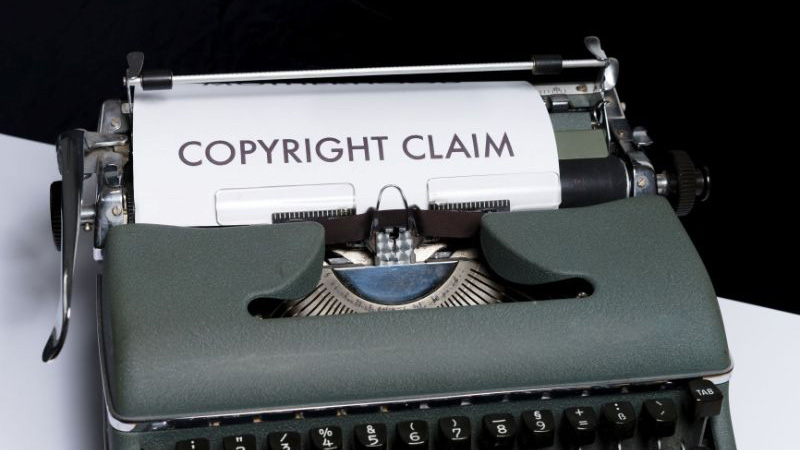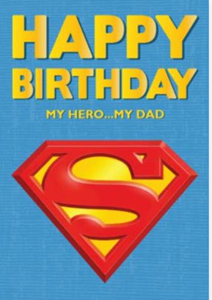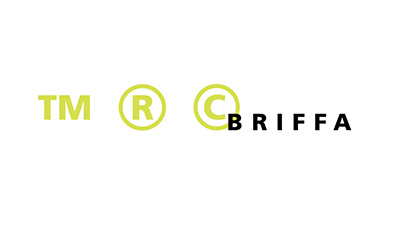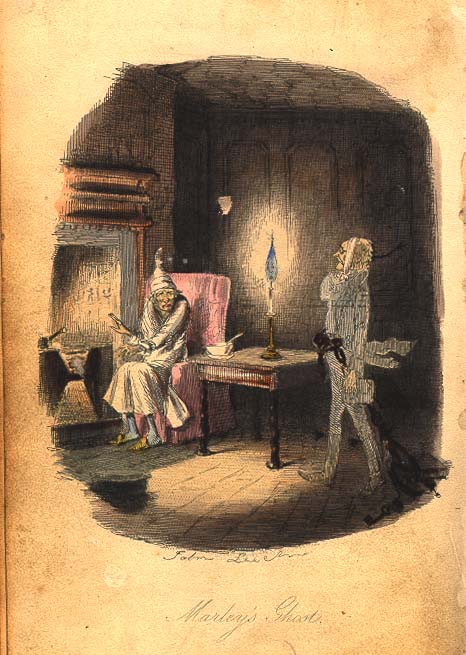
Copyright, trademarks, intellectual property – these are legal terms that apply to all greeting card publishers, but can often be a cause for confusion and concern.
In this article, we bring some clarity on what the UK Laws governing ownership and rights mean. We’ll bust some myths and provide some best practice advice and details on where to get more information.
Introduction to Intellectual Property
Intellectual Property, or IP, is a broad term which covers the following IP rights:
- Trade marks
- Design Rights
- Copyright
- Patents
Of particular importance, in the ever growing and competitive market for greeting cards, are trade marks and copyright. This is because the owners of the rights in artistic imagery are increasingly realising that they are the guardians of a valuable asset, which needs to be protected to prevent copying and a flood of inferior products in the marketplace.
For example, a designer may produce an eye catching birthday card that is received with great acclaim from customers appreciating its creative work, but weeks later, a similar if not identical card copying the design appears, taking credit and sales away from the original designer. Is this allowed and can it be prevented?
What is Copyright?
Copyright recognises the skill and labour and the ‘creative stamp’ expended by an author in creating a work. Copyright is, put simply, a right to copy a work.
People sometimes talk, confusingly, of “copyrighting their work” but in the UK there is no copyright registration procedure. Instead, in the UK at least, copyright is an unregistered right and copyright is automatically owned by the author of a copyright work, unless they are an employee acting in the course of their employment, in which case their employer automatically owns the copyright which has been created.
Copyright protection lasts up to 70 years from the death of the author.
Copyright Infringement
Copyright infringement occurs when a whole or substantial part of a copyright work is copied and, if you’re making an infringement claim, you need to show:
- a causal link between the two works so that the copyright work, or a substantial part of it, is the source of the infringing work, and
- a causal link between the two works so that the copyright work, or a substantial part of it, is the source of the infringing work, and
The ‘Red Bus’ case
In the famous case of Temple Island Ltd v New English Teas Limited (known as the ‘Red Bus’ case) a claim for copyright infringement was raised.

Image 1 was created by Mr Fielder and Image 2 was created by Mr Houghton.
Mr Fielder made a claim for copyright infringement against Mr Houghton, alleging that a substantial part of his original work had been copied. Naturally, Mr Houghton rejected these claims on the grounds that his work was sufficiently different.
Judgement was found in favour for Mr Fielder and it was held that Mr Houghton had copied a substantial part of Mr Fielder’s work and that there were obvious similarities between the two images such as the black and white images of the Houses of Parliament and the red London bus, which was also driving in the same direction.
When designing new images for greeting cards, you must be careful not to copy substantial part of someone else’s work. This would include copying a scene from a film or television programme and/or referencing a brand or name that could be a registered trade mark (see below at Trade Marks).
Copyright Ownership
You need to ensure that you own any works that are created by others for your cards such as graphic designers and illustrators. The best way is to ensure that those you engage, enter into a freelancer agreement. However, if individuals have already created works for your business and have not assigned their intellectual property rights over, we would recommend that you secure an assignment as soon as possible.
Often, once a fee has been paid to a freelancer, the organisation commissioning the designer assumes that they now own the copyright… but unfortunately this is not the case. Instead, the copyright created by the designer (even if they were paid to do it) still rests with the designer and only a written agreement can actually transfer or “assign” that copyright to the instructing party.
If you have secured your intellectual property, including copyright work created by a freelancer, you will be well placed to open up additional revenue streams through the licensing of your intellectual property. A licence grants permission to a third party to use your intellectual property, whether that be your copyright (card design), or brand name (see trade marks) and you can set out commercial terms covering royalties, how/where/length of time the intellectual property can be used. In the absence of an assignment, you will only have an implied licence to use the copyright and you may be restricted as to how you can use the copyright.
This has been the subject of a huge amount of litigation in the past often with long forgotten designers coming out of the woodwork and asserting copyright over a particular work when, for example, the business is sold. Equally, if you ever need to rely on the copyright work for an infringement claim (i.e. someone copies the graphic work produced) you will need to prove that you are the owner.
If you cannot point to a legal assignment from the original author, then this is likely to be problematic and it is likely to mean that your claim cannot be pursued.
This occurred when Coca Cola purchased Innocent Smoothies. The ‘Dude’ logo above was not properly assigned from its creator to Coca Cola who had to pay an additional (and substantial) sum to its creator to ensure it owned all copyright associated with it.
We recommend that you always seek to own all of the intellectual property rights in your greeting cards to avoid any disputes later down the line. Legal specialists Briffa can advise and provide an initial consultation free for GCA members
Copyright -fact or fiction!
There is a lot of conflicting advice out there about copyright, so how about we separate fact from fiction (take a guess before revealing the answers below):
FACT!
Under copyright law the copyright owner has the exclusive right to prevent another party from:
- copying your work
- distributing copies of it, whether free of charge or for sale
- renting or lending copies of your work
- performing, showing, or playing your work in public
- making an adaptation of your work
- putting it on the internet
Therefore, if a third party carries out any of the above listed acts (whether in whole or a substantial part) they are at risk of copyright infringement unless an exception applies. In order to avoid the risk of infringement, you should always obtain the copyright owner’s permission.
FICTION!
This is a worrisome but popular misconception, as illustrated by GCA member Megan Claire’s experience.
As copyright is an automatic right, so long as the work is original and falls into one of the following categories of work, it will acquire automatic copyright protection:
- literary, artistic, dramatic or musical work
- computer programme or software
- databases
- sound recording, films or broadcasts
- typographical arrangements of published editions
Although work on the internet is freely accessible and downloadable, unless copyright protection has expired, or is openly licenced, it is certainly not free to use. Failure to obtain permission will put you at risk of infringing someone else’s copyright.
FACT
Copyright does not protect ideas, instead it protects the expression of original ideas. On that basis, the moment you put pen to paper, for example with a sketch of your idea, you will automatically acquire copyright protection in that sketch. Unfortunately, if someone independently creates something that is similar to what you have created, they will not be infringing your copyright, so long as they have not actually copied your work.
If you have an idea that is worth protecting the safest way to protect it is to ensure that people you disclose your ideas to sign a non-disclosure agreement.
Trade Marks
A trade mark is essential to establish your brand and distinguish yourself from competitors in the market. If you produce a range of successful cards, you will want to have your brand associated with that line of cards as it represents quality. If you do not register the mark, there is a risk that someone else could register the same or a similar name before you, potentially giving them strong grounds to prevent you using your brand in the future.
Names and characters can also be protected with trade marks, which are particularly important if you develop a range of cards using the same characters. A trade mark is also a valuable asset which can generate an additional revenue stream if it is licensed out. If you have created a brand or character that has gathered a significant reputation, you may find that a manufacturer of cards in another country would like permission to use your trade mark on their cards in return for paying you a royalty.
Most brands have two types of trade mark: word and logo. Word marks afford the broadest protection as they cover any use of the words themselves whilst a logo mark protects a particular graphic image (i.e. the visual representation of the word in the logo).
Trade Mark Infringement
Trade mark infringement occurs if you use a trade mark without permission. For greeting cards, this can occur if you use an iconic image or brand name that has been registered as a trade mark. For example, the greeting card below uses iconic Superman ‘S’ logo, which is a trade mark of DC Comics.
Unless the creator of this card obtains a licence to use the registered trade mark, they will be committing trade mark infringement and liable to pay damages to DC Comics.
Top Tips from specialist legal GCA member Briffa
Non Disclosure Agreement
When discussing new projects and ideas someone you approach may take the concept and run with it themselves. There is no IP in an idea alone but only in the representation of it. One way to share and impart ideas and information in discussions is to rely on a non-disclosure agreement or confidentiality letter. This should be presented and signed prior to commencing discussions and should include obligations not to use or pass on information that has the necessary quality of confidence, i.e. that which is not already in the public domain or rightly and legitimately in the other party’s possession.
Clear Commercial Agreements
Upon agreeing the broad terms of Agreement make a note of them and draw up a ‘heads of terms’. The deal may not be quite complete and will not have been looked at by your lawyer. It is therefore essential that these heads are marked ‘Subject to Contract’.
It is important to have well defined contracts in place to protect your commercial interests. A failure to have clear, unambiguous, and robust contracts in place with clients and suppliers could lead to disputes arising as result of ambiguous contractual terms, and confidential material being used by third parties, at the detriment to you. Further you do not want to be subject to onerous terms that restrict how and where you can sell your product.
It is equally important that you read all contracts, letters of intent and non-disclosure agreements prior to signing them and if there is something that you do not understand, take legal advice before signing on the dotted line.
Due Diligence
Do your homework – research and check to ensure that the people or company you intend to work with are reputable. Due diligence should be carried out in advance, but it is never too late to undertake it, either in relation to the people you are meeting or the business they are involved in.
Information
Just as it is important that you do not disclose too much information in meetings unless the recipient acknowledges that it is confidential, it is also crucial that you do not say something that is itself subject to confidentiality. You should therefore check your agreements with third parties in relation to what you can and cannot do.
Further information
- See slides from GCA seminar in 2020 led by Briffa GCA Copyright and Licensing Seminar
- Briffa offer GCA members a Free initial consultation
- For information on how copyright protects your work visit gov.uk/copyright .
- For more information on Intellectual Property Law visit the gov.uk Intellectual Property Office website.
- How to register a trademark in the UK visit gov.uk trademark forms and fees
- How to register a trademark overseas, see Briffa blog Briffa offer GCA members a free initial consultation. Contact information for Briffa is in our Members Directory.
- For further information on copyright infringement and protecting your intellectual property please see GCA member Briffa’s dedicated page on copyright.
- Signing a non-disclosure agreement see GCA member Briffa website
- For more information on trade mark infringement and obtaining a licence please see Briffa’s trade mark page.
- Briffa have a series of blogs on their website that cover key areas:
- https://www.briffa.com/blog/help-ive-just-received-a-cease-and-desist-letter/
- https://www.briffa.com/blog/when-is-the-best-time-to-invest-in-ip/
- https://www.briffa.com/blog/do-i-need-a-lawyer-for-an-image-copyright-dispute/
- https://www.briffa.com/blog/unregistered-trade-marks-in-the-uk-what-protection-do-you-have/
- https://www.briffa.com/blog/can-you-register-your-copyright-work/
- https://www.briffa.com/blog/does-my-employer-own-my-intellectual-property/






